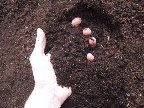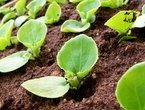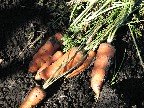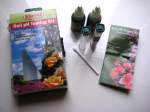Home › Garden soil
Healthy Garden Soil Is Essential
How Does Your Soil Measure Up?
 |
 |
 |
Healthy garden soil is essential to plant growth. But what is healthy soil and how does your own soil measure up?
To get the most from your garden, it really helps to know some basic facts about soil.
Why?
Well, firstly, because many plants are adapted to different soils and quite simply will not thrive in the wrong conditions and, secondly, because some cultivation techniques don't work on all types of soil.
Take a little time now to learn about the basics of garden soil and reap the rewards by knowing which plants will flourish in your garden and the best cultivation techniques to use.
Armed with a little knowledge, you will be able to avoid making expensive mistakes at the garden centre and direct your time and energy to doing things that will work.
The Perfect Garden Soil
I'm prepared to bet that you're familiar with the photos of the 'ideal' garden soil seen in gardening magazines and on TV.
Generally such soils are a deep rich brown due to their high organic content, have a crumbly 'workable' appearance and quite clearly provide the ideal habitat for all those beneficial soil organisms we know we should have!
They are neither too wet nor too dry, retaining sufficient water to see plants through any dry spells without becoming waterlogged during wet periods.
Seems too good to be true? Don't be disheartened because...
... the key point is that usually they are the result of careful cultivation and this means that you can get there too!
How to Assess and Improve Your Own Soil
Start by assessing your own soil.
First, check out the three basic soil characteristics that you need to be aware of as a gardener.
Then take a look at the main types of soil you are likely to encounter.
Once you've done that, you should have a good idea of your own soil type but it is still worth taking a few minutes to carry out a simple soil identification 'feel test'.
As a final step review the information about soil pH and find out how easy it is to test your soil pH level using either a soil pH test kit or a soil pH meter.
Then, once you know what you're dealing with, find out how to improve or amend your soil.
Working with Nature: Plants for Soil Types
All types of soil have some benefits; it's a question of working out what you've got and learning how to make the most of it. The easiest way is always to work with nature.
For example, if you find you have a heavy clay soil, be sure to choose trees and shrubs and perennials and climbers that naturally grow in clay.
Similarly, there are many plants that thrive in poor sandy soil. These are some of the best perennials for sand and my five favourite climbers for sandy soil.
Chalky soil? Look for trees and shrubs and perennials and climbers that are adapted to chalky, alkaline soils.
If your soil is acidic choose from the range of acid-loving, or ericaceous, trees and shrubs and perennials and climbers.
Home › Garden soil
